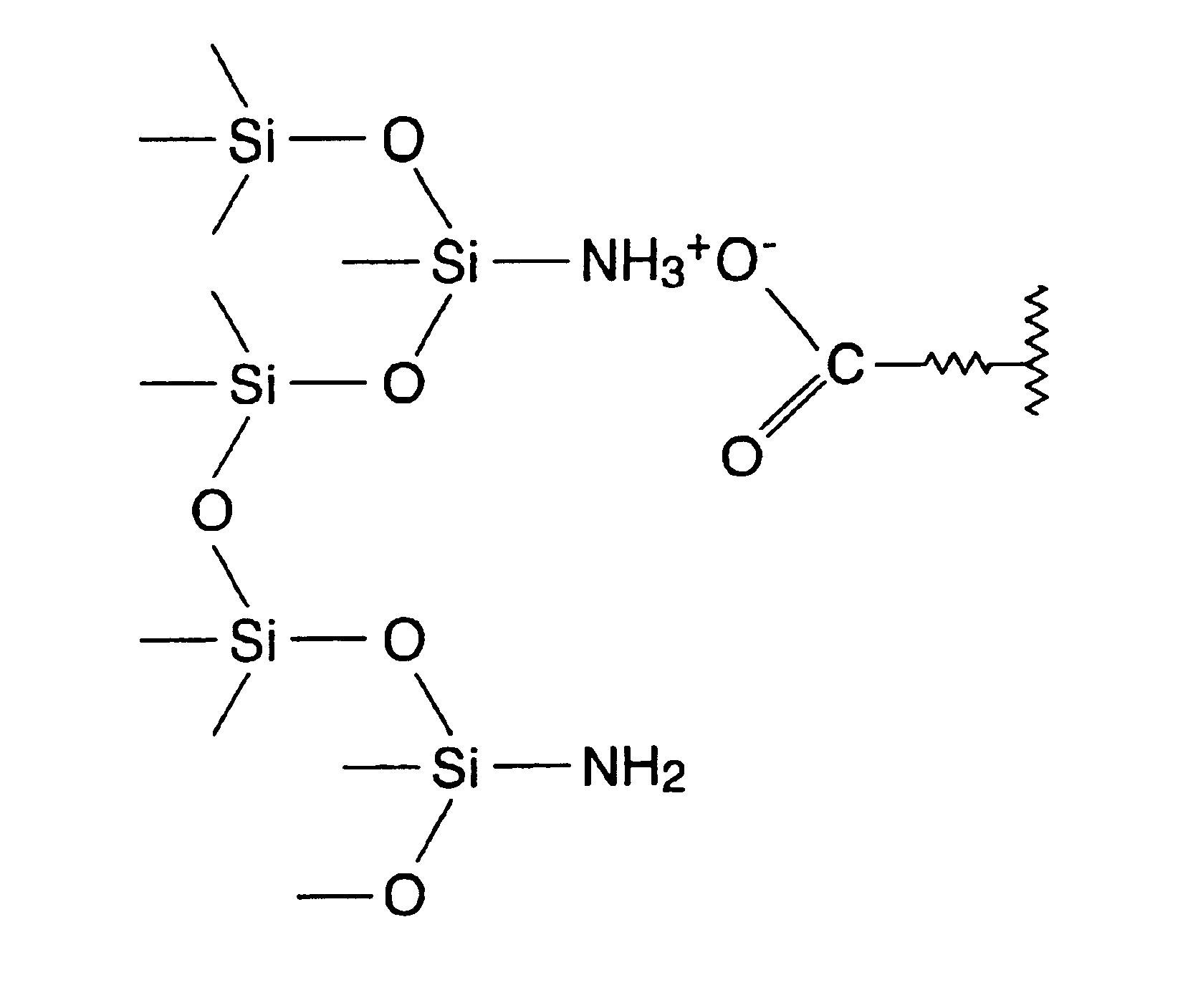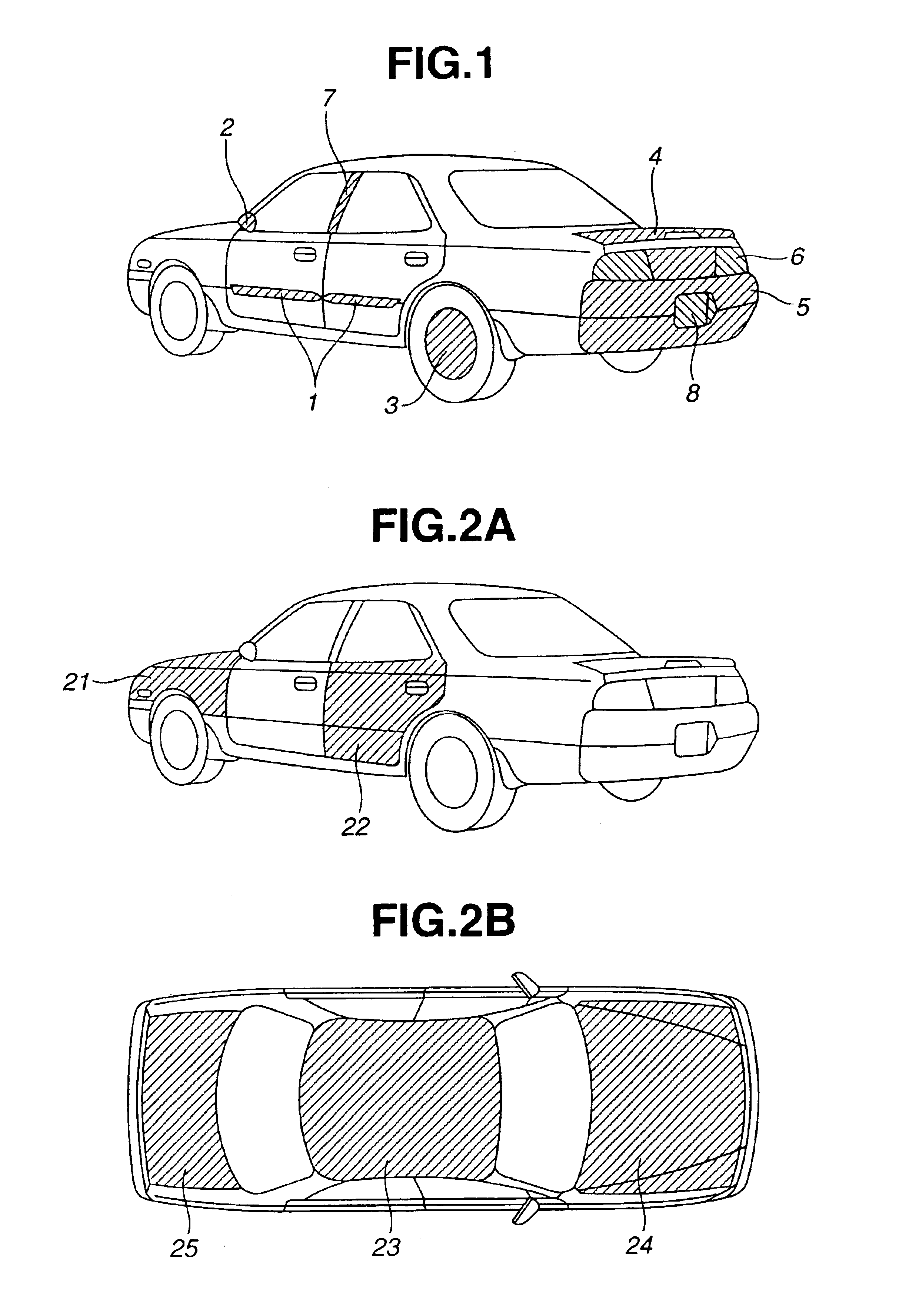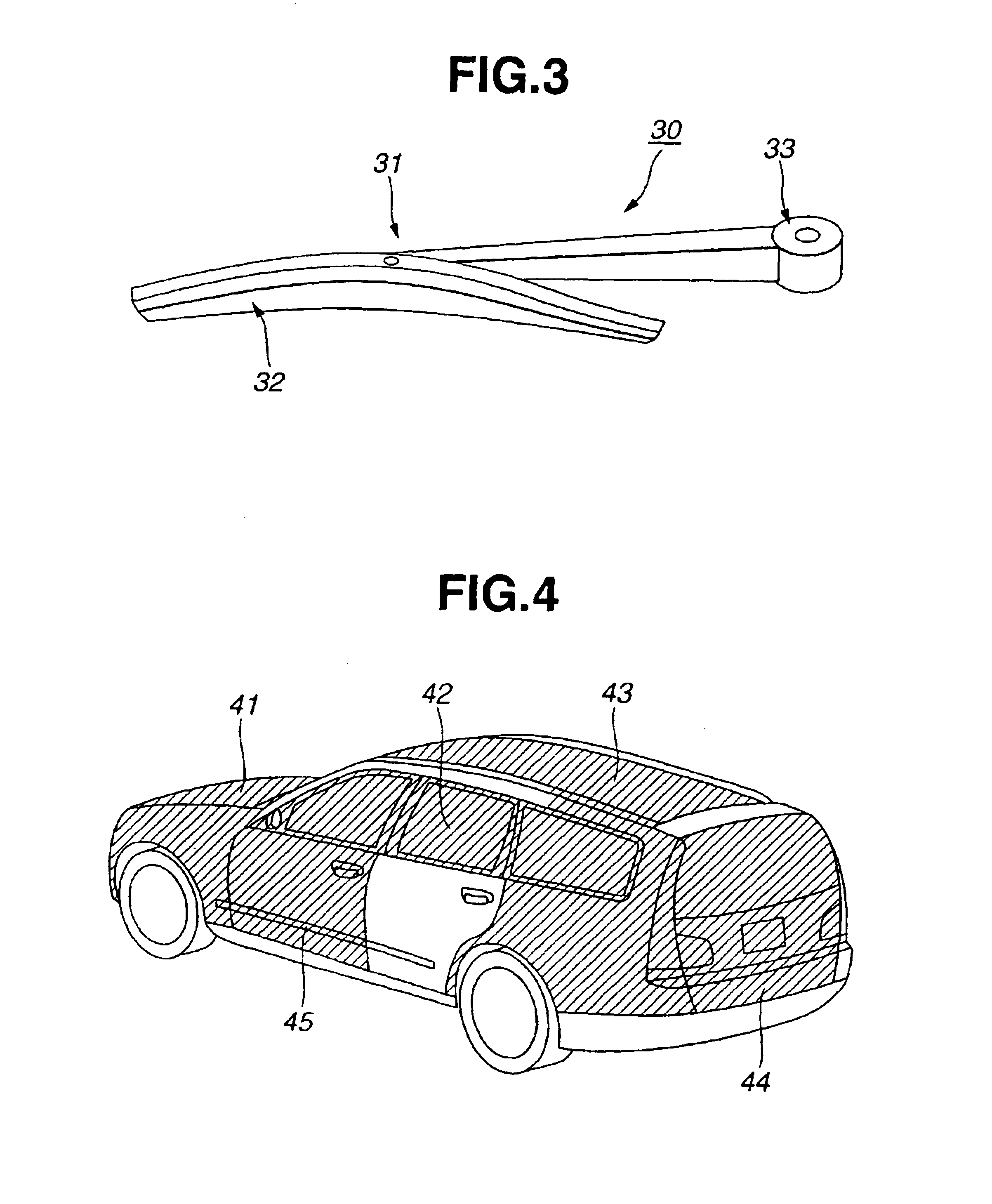Resin composition and its production process and uses
a technology of resin composition and production process, applied in the field of resin composition, can solve the problems of low transparency of composite glass material to ensure visibility, insufficient transparency of obtained glass material, and material impact resistance. to achieve the effect of increasing the rigidity of resin composition
- Summary
- Abstract
- Description
- Claims
- Application Information
AI Technical Summary
Benefits of technology
Problems solved by technology
Method used
Image
Examples
example 1
[0134]A monomer solution containing 0.7 mol / l of methyl methacrylate and 0.3 mol / l of acrylic acid in methyl ethyl ketone was prepared. Then, 0.5 mol % of azobisisobutyronitrile (hereinafter abbreviated to AIBN, used as a polymerization initiator) was added into the monomer solution. The thus-obtained solution was heated to 80° C.
[0135]In the meantime, silica particles were treated with 3-aminopropyltrimethoxysilane (as a surface modifier) to modify 15 to 50% of surface hydroxyl groups in most of the silica particles. The silica particles used were “Snowtex OUP” available Nissan Chemical Industries. Ltd. in the form of chain-shaped secondary particles (having a diameter of 5 to 10 nm and a length of 90 to 350 nm) of fine silica particles (having a diameter of 5 to 10 nm and a length of 7 to 50 nm). The surface-modified silica particles were dispersed in methyl ethyl ketone.
[0136]While the dispersion of the surface-modified silica particles was gradually added to the monomer solution...
example 2
[0139]A monomer solution containing 0.7 mol / l of methyl methacrylate and 0.3 mol / l of styrenesulfonic acid in methyl ethyl ketone was prepared. Then, 0.5 mol % of AIBN (as a polymerization initiator) was added to the monomer solution. The thus-obtained solution was heated to 80° C.
[0140]In the meantime, silica particles were treated with N-2-(aminoethyl)-3-aminopropyltrimethoxysilane (as a surface modifier) in such a manner as to modify 15 to 50% of surface hydroxyl groups in most of the silica particles. The silica particles used were “Snowtex OUP” available from Nissan Chemical Industries. Ltd. in the form of network-shaped secondary particles (having a diameter of 5 to 10 nm and a length of 90 to 350 nm) of fine silica particles (having a diameter of 5 to 10 nm and a length of 7 to 50 nm). The surface-modified silica particles were dispersed in methyl ethyl ketone.
[0141]While the dispersion of the surface-modified silica particles was gradually added to the heated monomer solutio...
example 3
[0144]A monomer solution containing 0.7 mol / l of methyl methacrylate and 0.3 mol / l of acrylic acid in methyl ethyl ketone was prepared. Then, 0.5 mol % of AIBN (as a polymerization initiator) to was added the monomer solution. The thus-obtained solution was heated to 80° C.
[0145]In the meantime, silica particles were treated with 3-aminopropyltriethoxysilane (as a surface modifier) in such a manner as to modify 15 to 50% of surface hydroxyl groups in most of the silica particles. The silica particles used were “Snowtex OUP” available from Nissan Chemical Industries. Ltd. in the form of chain-shaped secondary particles (having a diameter of 5 to 10 nm and a length of 30 to 80 nm) of fine silica particles (having a diameter of 5 to 10 nm and a length of 7 to 50 nm). The surface-modified silica particles were dispersed in methyl ethyl ketone.
[0146]While the dispersion of the surface-modified silica particles was gradually added to the heated monomer solution, the methyl methacrylate an...
PUM
| Property | Measurement | Unit |
|---|---|---|
| Length | aaaaa | aaaaa |
| Percent by mass | aaaaa | aaaaa |
| Percent by mass | aaaaa | aaaaa |
Abstract
Description
Claims
Application Information
 Login to View More
Login to View More - R&D
- Intellectual Property
- Life Sciences
- Materials
- Tech Scout
- Unparalleled Data Quality
- Higher Quality Content
- 60% Fewer Hallucinations
Browse by: Latest US Patents, China's latest patents, Technical Efficacy Thesaurus, Application Domain, Technology Topic, Popular Technical Reports.
© 2025 PatSnap. All rights reserved.Legal|Privacy policy|Modern Slavery Act Transparency Statement|Sitemap|About US| Contact US: help@patsnap.com



